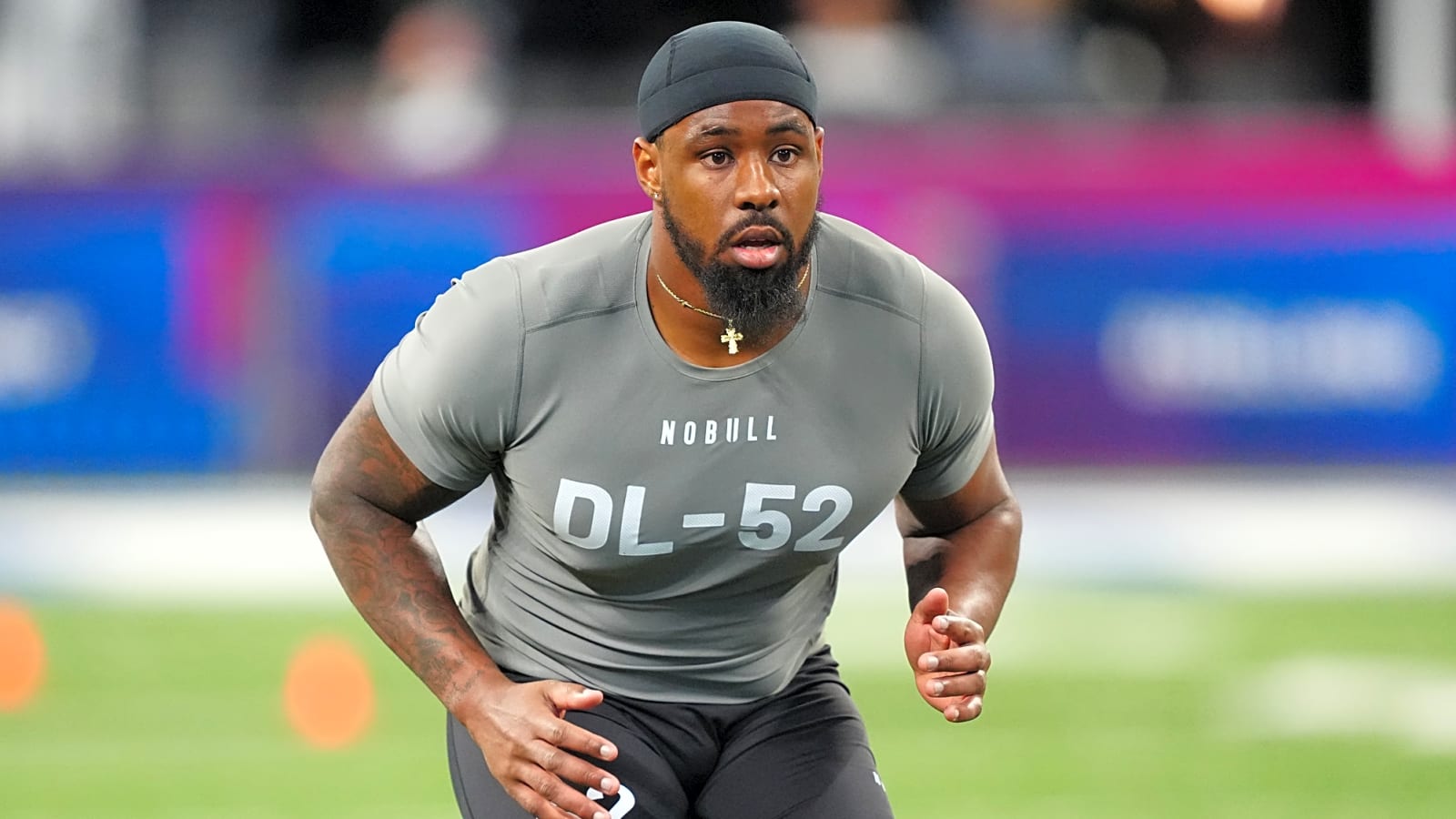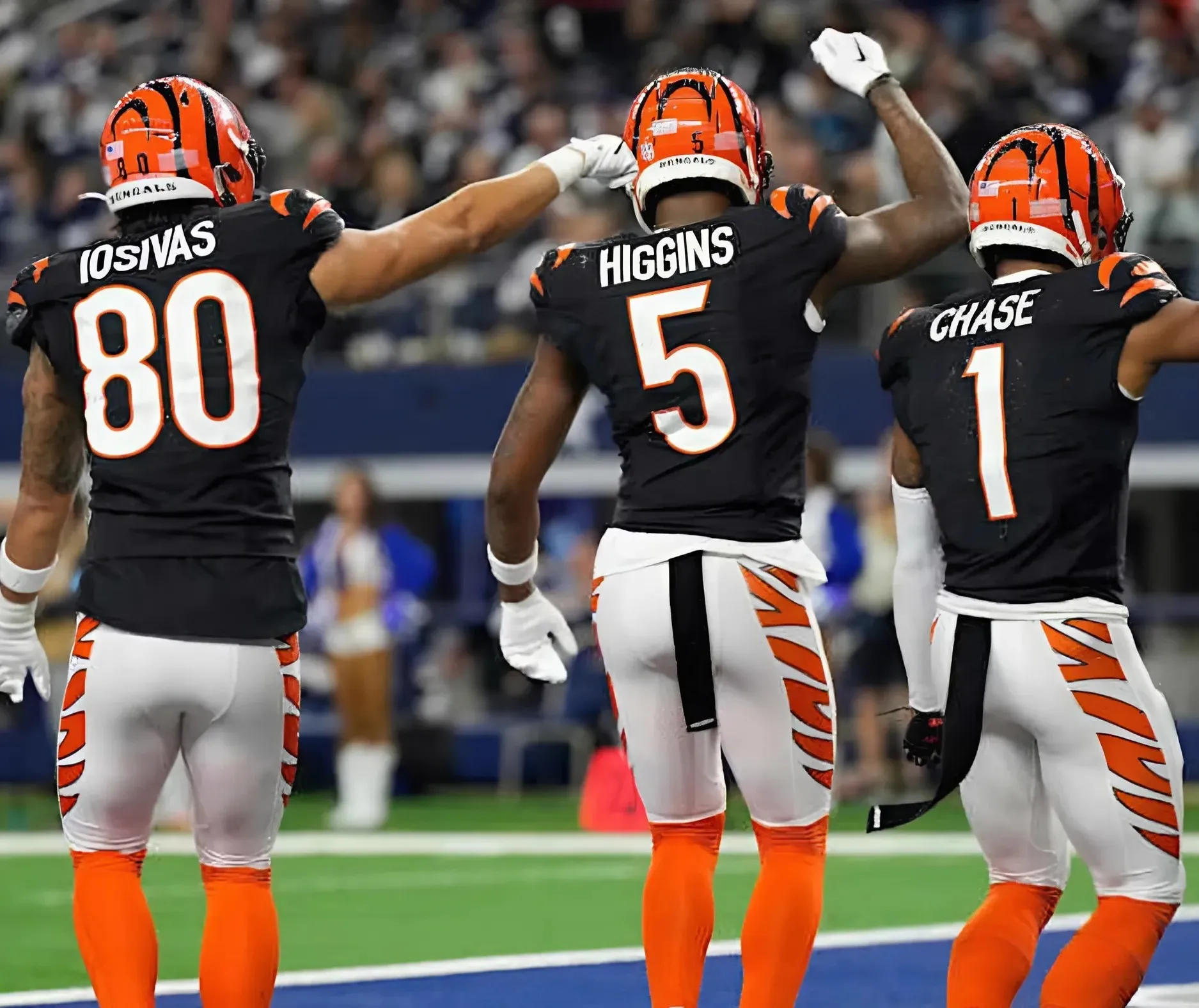
The 2025 NFL draft has come and gone, and the New York Jets’ roster appears to be mostly set.
Coming off a 5-win season and dealing with a tight cap situation, it never seemed feasible that New York could fill all of its roster holes in one offseason. Alas, the depth chart remains porous going into May.
One of the most glaring weaknesses is the lack of a sturdy defensive end who can set the edge in rushing situations. As currently constructed, the Jets face the possibility of having at least one exploitable edge defender on the field for the majority of their run plays.
The return of Jermaine Johnson will give the Jets at least one reliable run defender on the edge, although it remains to be seen what he will look like after an Achilles injury. Outside of Johnson, though, the Jets are poised to be pummeled on the edge.
Will McDonald might be the worst run defender in the NFL at his position. However, the Jets do not have a reliable alternative who could allow them to comfortably stash McDonald into a pass-heavy role until he shows enough improvement in the run game to warrant an every-down role. For now, the Jets have to give McDonald an every-down snap count and live with his run defense.
Micheal Clemons has the ideal physical makeup for this role, standing at 6-foot-5 and 263 pounds with immense strength, but his production has not matched up. Clemons was atrocious in the run game last season (46.3 run defense grade, via PFF). The fact that he has more career penalties (8) than sacks (7.5) suggests he should not be guaranteed a roster spot.
Braiden McGregor, an undrafted free agent pickup in 2024, did not show anything of note across seven rookie-year appearances.
The Jets added to the unit with their fifth-round selection of Miami’s Tyler Baron, whom they traded up for. He isn’t a fit for the role in question, though.
Baron’s appeal is built around his speed (4.62 forty, 85th percentile among EDGE all-time) and pass-rushing upside. His 258-pound weight (35th percentile among EDGE all-time), 33⅛” arms (34th percentile), and 19 bench press reps (15th percentile) paint the picture of a player who does not have a great outlook as an edge-setter.
So… what is the Jets’ plan here? Who is going to fill the shoes that have remained empty since the Jets’ (foolish) trade of John Franklin-Myers? It projects as an important role in Aaron Glenn’s defense, considering that Glenn counted on big-bodied defensive ends like Levi Onwuzurike and John Cominsky in Detroit.
Perhaps they are counting on a breakout from the unit’s most overlooked player: Eric Watts.
Can Eric Watts fill the Jets’ big DE role?
Watts is the best fit for this role of any player on the Jets’ defensive line. He stands at 6-foot-5⅝ (89th percentile among EDGE all-time) and 274 pounds (77th percentile) while carrying mammoth 35¾” arms (97th percentile). It is the perfect frame for holding ground on the edge. He’s got the bulk to anchor down and the length to keep blockers at bay.
The Jets signed Watts as an undrafted free agent out of Connecticut in 2024. After a strong showing in training camp and the preseason, Watts made the Jets’ opening 53-man roster.
Watts appeared in each of the Jets’ final 14 games after being a healthy scratch from Weeks 1-3. He finished the season with 231 defensive snaps (16.5 per game), playing 24% of the Jets’ defensive snaps from Week 4 onward.
New York primarily utilized Watts on early downs. He played the most run-centric role of any edge defender on the team; 55.8% of his snaps came on run plays, which led the Jets’ eight edge defenders. It was also the second-highest rate in the NFL among the 130 edge defenders who played at least 200 defensive snaps.
Watts performed well in the role. He earned a 72.1 run defense grade at PFF, placing in the 81st percentile among qualified edge defenders.
The film backs it up. Watts used his frame to overwhelm tight ends in one-on-one matchups. He also displayed quick play recognition and a nonstop motor.
Watts wears No. 58.
Watts does a nice job of shuffling his feet and staying square to the quarterback, keeping himself in a position to get back outside if he needs to pursue the QB on a keeper. Quickly confirming the handoff, Watts darts inside and pursues the RB for the stop.
Watts is chipped by the right tackle while also taking on the tight end. He loses his footing initially, but quickly regains his ground. The TE partially disengages from Watts to pick up Quincy Williams. Watts uses his length to disengage from the block and then uses it again to reach out and grasp the RB as he runs by.
Watts does a nice job of staying home and fulfilling his responsibility to the QB (something Micheal Clemons consistently failed to do in the same spot). With Watts displaying a good angle to get out in front of the QB, Josh Allen decides to hand the ball off.
After he confirms the ball is handed off, Watts pursues the RB. His pursuit angle is impressive; notice how he stays over the top and anticipates the RB coming to him, rather than running directly toward the RB and risking a missed tackle via overpursuit. Watts had zero missed tackles in 2024, and smart angles like this are a key reason.
The Vikings try to widen Watts by showing jet motion, but Watts quickly diagnoses the play and begins pursuing inside. He lowers his shoulder and flattens the TE (although the TE was already slipping pre-contact). In the process, Watts converts into an athletic diving tackle, flying over the TE to grasp the RB’s lower body and yank him down.
Even though Watts does not make this tackle, he completely destroys the play. He drives the TE multiple yards into the backfield, cutting off the front side and forcing the RB to cut back inside toward the traffic. In the process, Watts takes up two other blockers, freeing up multiple Jets teammates to rally to the ball.
This is another great example of off-the-stat-sheet edge-setting. Watts shows the benefit of his long arms as he makes first contact and then extends to keep the TE at bay, affirming control of the battle and setting a firm edge. The RB tries to bounce outside to dodge the interior pursuit from Jamien Sherwood, but with Watts having the edge set, the RB is left in no man’s land. He is forced to put his head down and take the hit from Sherwood.
A potential solution from within
When the Jets’ new coaching staff and front office entered the building in January, one of their first tasks was to evaluate the talent on their own roster. This was a necessary first step, helping them identify which needs were the most vital to address in free agency and the draft.
This process opens up the possibility for a number of outcomes. Some players might be held in a surprisingly low regard by the new regime. This clearly applied to Aaron Rodgers, and it may have also applied to some of the other free agents New York allowed to walk. Perhaps it applies to Breece Hall, given Aaron Glenn’s non-committal approach to the fourth-year back.
On the other hand, the new regime might find itself surprisingly smitten by some of the returning players. Eric Watts could be one of them.
The Jets felt the need to go out and spend on two defensive backs in free agency, and they added another in the third round. They were not content with Tyrod Taylor as the stopgap quarterback. In the draft, they made it clear that they desired new building blocks at right tackle and tight end. Glenn and Darren Mougey surely identified all of these spots as dire needs.
But throughout free agency and the draft, New York left the defensive line largely untouched. It is a surprising strategy given the apparent lack of depth (both on the edge and on the interior). Maybe, though, it is a product of the Jets’ confidence in their in-house options.
Watts will probably not become a long-term centerpiece for the Jets. His pass rushing is an enormous work-in-progress; on 102 pass-rush snaps in 2024, he had zero sacks, zero hits, and five hurries (4.9% pressure rate). However, he possesses an ideal skill set for a very specific role – one that the Jets badly need to fill in Aaron Glenn’s defense.
It wouldn’t be the most shocking outcome if Glenn and Steve Wilks sat down to watch Watts’ film and concluded that he is a better option for the early-down defensive end role than whichever replacement-level player they’d scoop up in free agency. If they came to that conclusion, Mougey was likely all for it, considering Watts’ $967K cap hit in 2025. Rolling with this type of player to fill a small role is good business – if the player can fill it effectively.
Counting on Watts would also fit snugly into the Jets’ overarching philosophy of betting on development. Watts is 24 years old and has a massive frame to go with 4.67 speed and a 36.5-inch vertical. Given the rest of New York’s moves this offseason, it would make perfect sense if the Jets’ coaching staff wants to see whether it can squeeze more production out of him (especially at his price tag).
Cheap with high upside – that is the archetype New York has targeted this offseason. One of the best fits for that billing is a player who already logged 14 games in green last season.
The risk of betting on someone like Watts is undoubtedly higher than bringing in a more proven veteran in free agency, but the Jets are obviously okay with that. Every move they have made this offseason suggests they are all-in on a high-ceiling/low-floor approach in 2025. With limited expectations and multiple years of rope, they are ready to bet on their coaching staff to make the most of unheralded players with sneaky upside.
Fans already know this from the team’s offseason additions, ranging from Justin Fields in free agency to the team’s athletic-yet-underdeveloped draft picks, but don’t forget about Eric Watts.

-1742112653-q80.webp)

